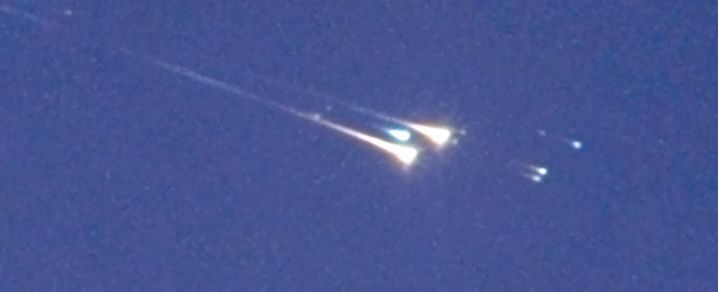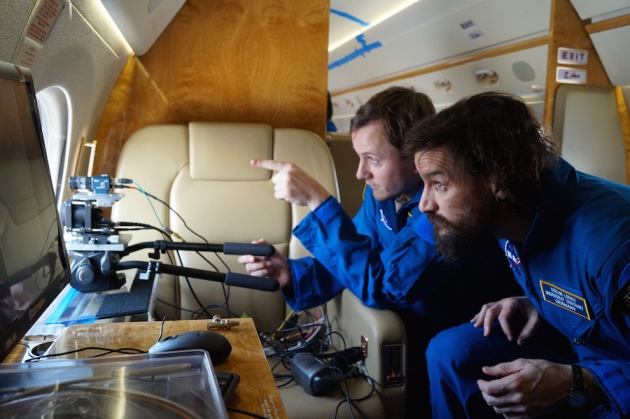WT1190F burns into a spectacular fireball on its journey through Earth’s atmosphere

NASA's researchers observed space debris named WT1190F fall to Earth on November 13, 2015. According to their report the object was more fragile than originally thought and it quickly burned into a fireball brighter than Venus, providing a spectacular view on its way down.
An international team of scientists from the US, Germany, and the United Arab Emirates have met in the Sri Lankan town of Ambalangoda to observe the re-entry of the object from the chartered jet aircraft, and gather data.

Video credit: IAC/UAE Space Agency/NASA/ESA
WT1190 entered Earth's atmosphere on November 13 at 06:18 UTC. A chartered executive jet has been set to monitor the event at an altitude of 12 km (7.5 miles) from a distance between 100 and 200 km (62.1 and 124.3 miles), and was transformed into an observing platform housing about 20 cameras prior to the impact.


Stefan Loehle and Fabian Zander of the University of Stuttgart, Germany, preparing to observe WT1190F, November 13, 2015. Image credit: IAC/UAE Space Agency/NASA/ESA
The discovered object was first observed by the Catalina Sky Survey in 2013, and has been seen on a few occasions since. It was named WT1190F and had been orbiting Earth with a period of 3 weeks in a highly eccentric orbit. WT1190F's flythrough our planet's atmosphere has provided the experts with a good opportunity to gather useful data aimed at improving our understanding of how the objects interact with our atmosphere.


Video credit: IAC/UAE Space Agency/NASA/ESA
According to the scientists a large amount of good quality has been gathered on the unusual object. This data will be used to improve modeling of incoming orbital objects. The successful flythrough observation has been regarded as very important because it demonstrates that it is indeed possible to observe a re-entering asteroid if enough advance notice has been provided.
The flight was a major scientific success, according to Mark Boslough, the physicist from Sandia National Laboratoreid in Albuquerque, New Mexico.
Featured image: A piece of space debris named WT1190F burning in the Earth's atmosphere, November 13, 2015. Image credit: IAC/UAE Space Agency/NASA/ESA

Commenting rules and guidelines
We value the thoughts and opinions of our readers and welcome healthy discussions on our website. In order to maintain a respectful and positive community, we ask that all commenters follow these rules:
We reserve the right to remove any comments that violate these rules. By commenting on our website, you agree to abide by these guidelines. Thank you for helping to create a positive and welcoming environment for all.